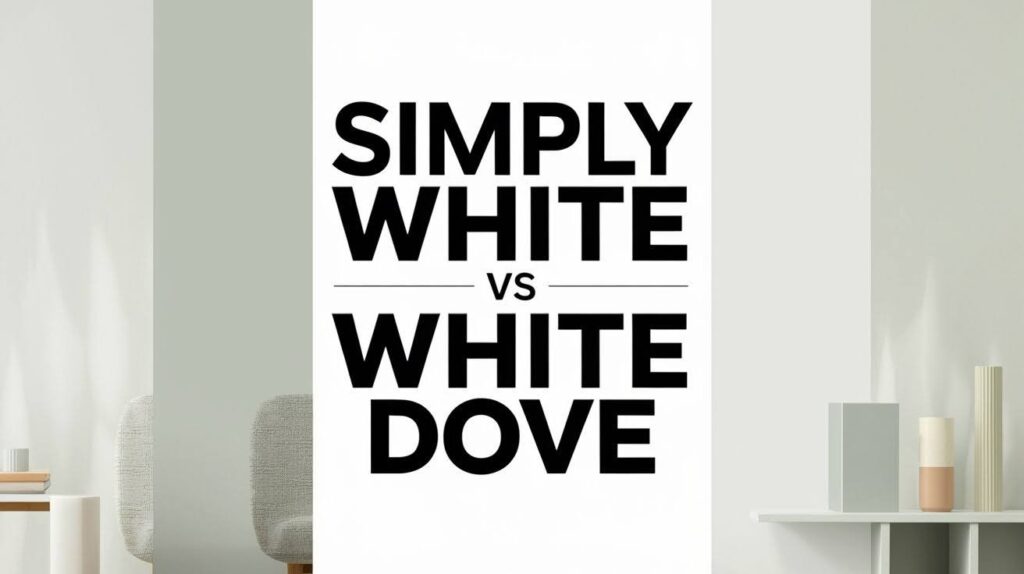When it comes to choosing the perfect white paint for your home, two names keep coming up in every conversation: Simply White and White Dove. I’ve spent years helping homeowners pick the right shade, and trust me, this choice can make or break your space.
Both colors look similar at first glance, but they have distinct personalities that work better in different rooms and lighting conditions. In this article, I’ll walk you through everything you need to know about these popular Benjamin Moore whites. We’ll compare their undertones, examine how they perform in various lighting situations, and determine which one best suits your specific needs.
By the end of this guide, you’ll know exactly which white belongs on your walls. Ready to settle this debate once and for all?
Simply White Or White Dove: Which Is Better For You?
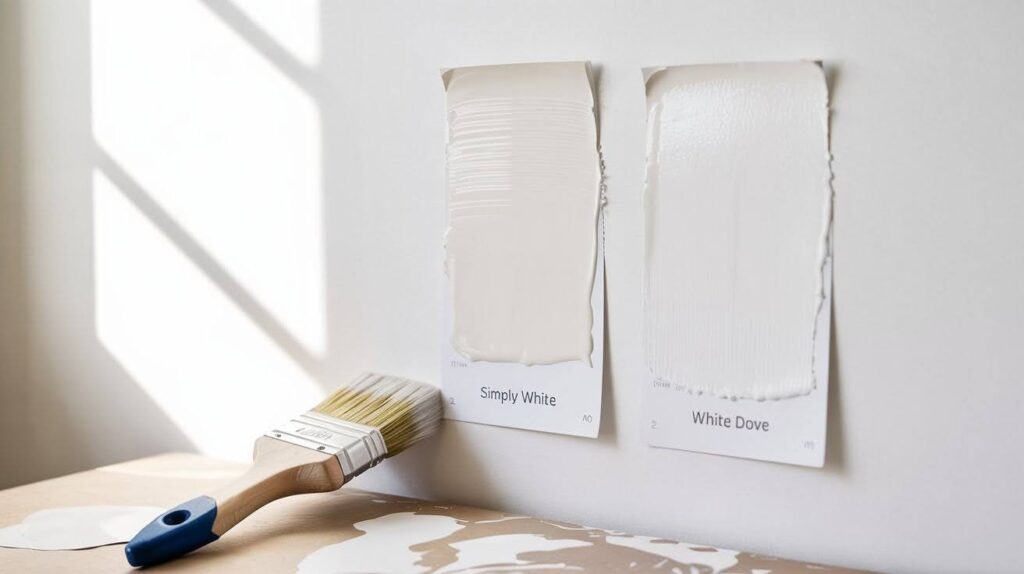
Here’s the thing about choosing white paint. It sounds easy until you’re standing in the paint store staring at dozens of white samples that all look the same.
Simply White and White Dove are both Benjamin Moore colors. They’re both incredibly popular. But they’re not the same white at all.
Simply White leans slightly warm with subtle peachy undertones. It’s Benjamin Moore OC-117. This color works well in rooms with lots of natural light.
White Dove is cooler and crisper. It’s Benjamin Moore OC-17. This one has gray undertones that make it feel more modern.
The difference might seem small. But trust me, it matters.
The bottom line? Simply White works better in spaces that need warmth. White Dove shines in contemporary settings that need clean, crisp color.
Simply White vs White Dove: Which White Paint Should You Choose?
A quick comparison to help you pick the perfect white for your space.
| Feature | Simply White | White Dove |
| Color Temperature | Cool undertones | Warm undertones |
| Best Lighting | Bright, natural light | All lighting conditions |
| Room Feel | Crisp and modern | Cozy and inviting |
| Light Reflection | High reflection, bright bounce | Softer light reflection |
| Best For | Contemporary spaces | Traditional homes |
| North-Facing Rooms | Can feel cold | Stays warm |
| Undertones | Slight blue/gray hints | Cream/beige hints |
| Popular Use | Kitchens, bathrooms | Living rooms, bedrooms |
| Paint Finish Impact | Shows imperfections more | Forgiving on walls |
| Complementary Colors | Bold, bright accents | Neutral, earth tones |
Simply White Vs White Dove: Pros And Cons Summary
Here’s an honest breakdown of what works and what doesn’t with each white paint.
Pros Of Simply White
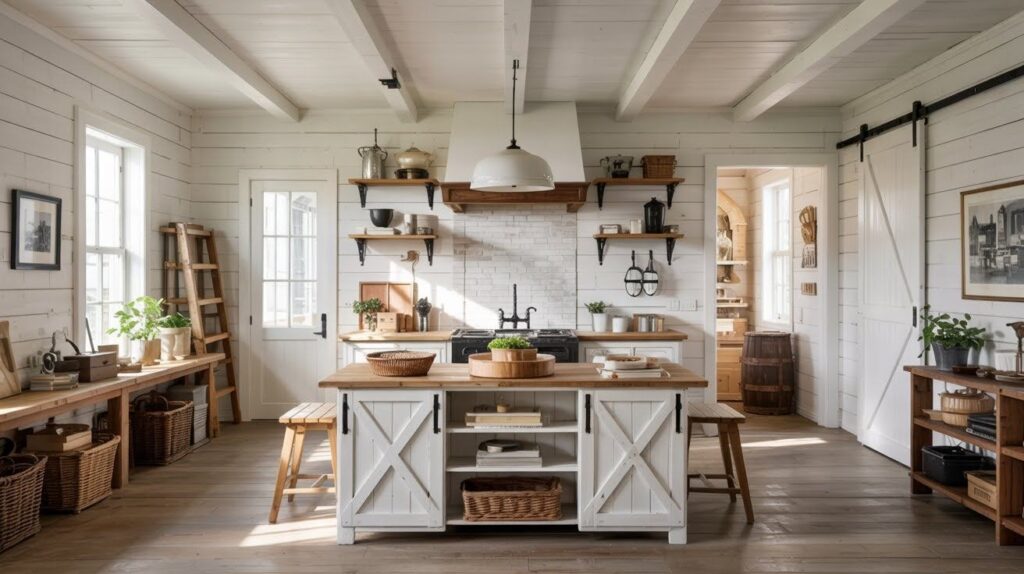
Simply White excels at creating warm, inviting spaces that feel comfortable and cozy. Simply White makes rooms feel like home. That’s its biggest strength.
The warm undertones work magic in bedrooms and living spaces. People feel more relaxed in rooms painted with Simply White. I’ve seen it happen dozens of times.
It complements warm wood beautifully. Your oak floors and cherry cabinets will look amazing next to this white.
Simply White photographs well, too. Instagram loves this color. Those cozy farmhouse photos you see everywhere? Most use Simply White or something very similar.
This white works in spaces with limited natural light. The warm undertones prevent that cold, dreary feeling you get with cooler whites.
Cons Of Simply White
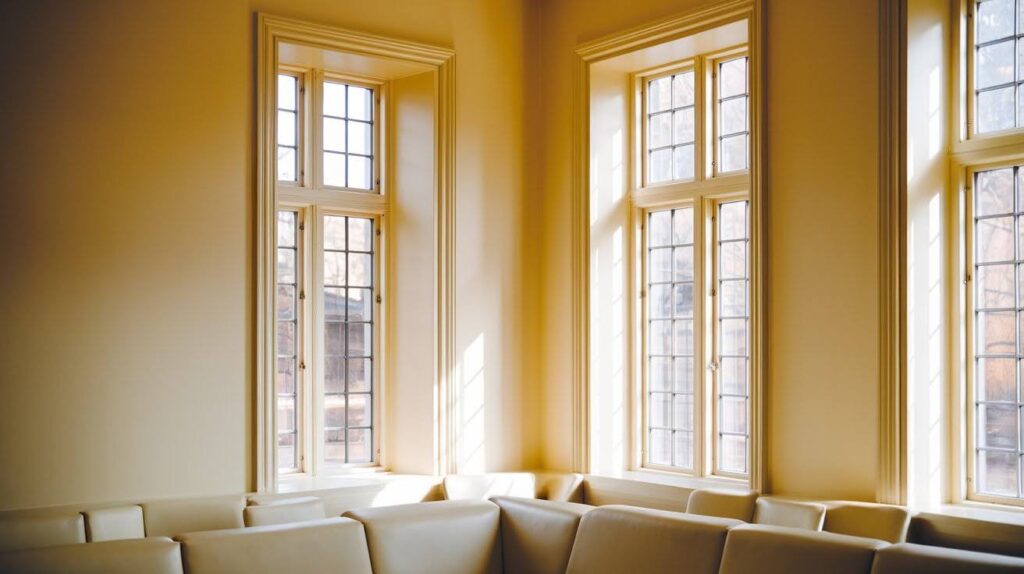
Simply White can look too warm or peachy in certain lighting conditions and spaces. The warm undertones can backfire. Big time.
North-facing rooms make Simply White look yellow or peachy. I’ve had clients panic thinking they picked the wrong color. Sometimes they did.
It doesn’t work well in modern spaces. The cozy warmth clashes with sleek, contemporary design. You end up with confused style signals.
Simply White can make trim work look muddy. The warm undertones get lost on narrow molding and baseboards. White Dove handles trim better.
Some people find it too creamy or off white. If you want pure, clean white, Simply White disappoints.
Pros Of White Dove
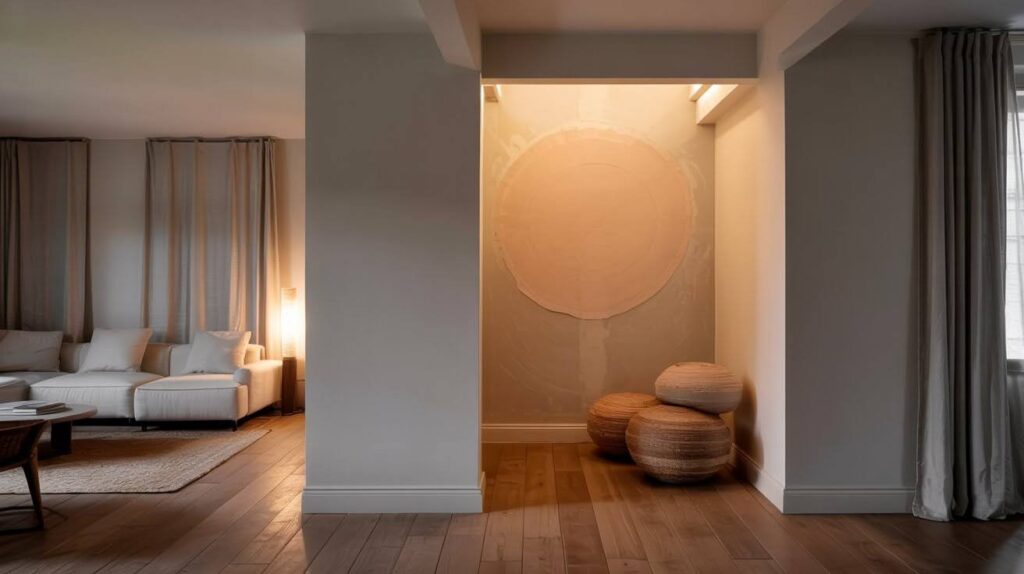
White Dove delivers a consistent, clean white color that works in almost any space. White Dove is the safe choice. And sometimes safe wins.
It stays neutral in almost any lighting. You won’t get those weird color shifts that surprise you. This makes it perfect for beginners.
Modern and traditional styles both love White Dove. It’s truly versatile. I use it when clients can’t decide on their style direction.
The crisp color makes architectural details pop. Crown molding, wainscoting, and built-ins look sharp with White Dove.
It works beautifully on trim and ceilings. The cool undertones create clean lines and good contrast.
Cons Of White Dove

White Dove can feel cold and sterile in spaces that need warmth and coziness. White Dove can feel too clinical. Like a hospital or office.
Rooms without enough warm elements feel cold with White Dove. You need wood, textiles, or warm metals to balance it out.
The gray undertones can make north facing rooms feel dreary. Not as bad as some cool whites, but still noticeable.
Some people find it boring. It plays it safe. If you want personality in your white, White Dove might disappoint.
It doesn’t complement warm wood tones as well as Simply White does. The cool undertones can make honey oak or pine look yellow.
Quick Tips For Choosing Between Simply White And White Dove
Test both colors in your space:
- Paint large samples on different walls
- Check how they look at different times of day
- Watch for color changes in morning and evening light
Consider your lighting:
- Simply White works best in south facing rooms with lots of natural light
- White Dove handles north facing rooms and tricky lighting better
- LED bulbs can make Simply White look too warm at night
Match your style:
- Choose Simply White for farmhouse, cozy traditional, and transitional styles
- Pick White Dove for modern, minimalist, and formal traditional spaces
- White Dove works better in contemporary kitchens and bathrooms
Think about your furniture:
- Simply White complements warm wood tones and cozy textures
- White Dove pairs well with cool metals, gray furniture, and sleek finishes
- Mixed metals work better with White Dove’s neutral base
Conclusion
Choosing between Simply White and White Dove doesn’t have to stress you out. Both are great colors that serve different purposes.
Simply White brings warmth and coziness to your home. It’s perfect for farmhouse kitchens, cozy bedrooms, and spaces with warm wood tones. But watch out for north facing rooms where it might look too peachy.
White Dove gives you a clean, crisp color that works almost anywhere. It’s your best bet for modern spaces, tricky lighting, and when you want to play it safe.
My advice? Test both colors in your specific space. Paint large samples and live with them for a few days. The right choice will become obvious once you see how each white behaves in your lighting.
Trust your instincts and pick the one that makes you smile.
Frequently Asked Questions
Which White Is Better For Small Rooms?
White Dove typically works better in small spaces because its cool undertones can make rooms feel larger and more open. Simply White might make small rooms feel cozier but potentially more cramped due to its warm, enveloping nature.
Can I Use Simply White On Kitchen Cabinets?
Yes, Simply White works beautifully on kitchen cabinets, especially in farmhouse or traditional kitchens. However, make sure your kitchen gets good natural light, as the warm undertones can look yellow in poorly lit spaces.
Does White Dove Look Gray In Certain Light?
White Dove can show subtle gray undertones in north facing rooms or under certain artificial lighting. The gray notes are usually very mild, but they become more noticeable when compared directly to warmer whites like Simply White.
Which White Works Better With Stainless Steel Appliances?
White Dove pairs much better with stainless steel appliances and cool metals. Simply White’s warm undertones can clash with the cool finish of stainless steel, creating an awkward color combination in your kitchen.
Should I Use The Same White Throughout My Entire House?
Using one white throughout creates flow and consistency, but it’s not required. Many homeowners successfully use Simply White in cozy spaces like bedrooms and White Dove in formal areas like dining rooms for a cohesive yet varied approach.

